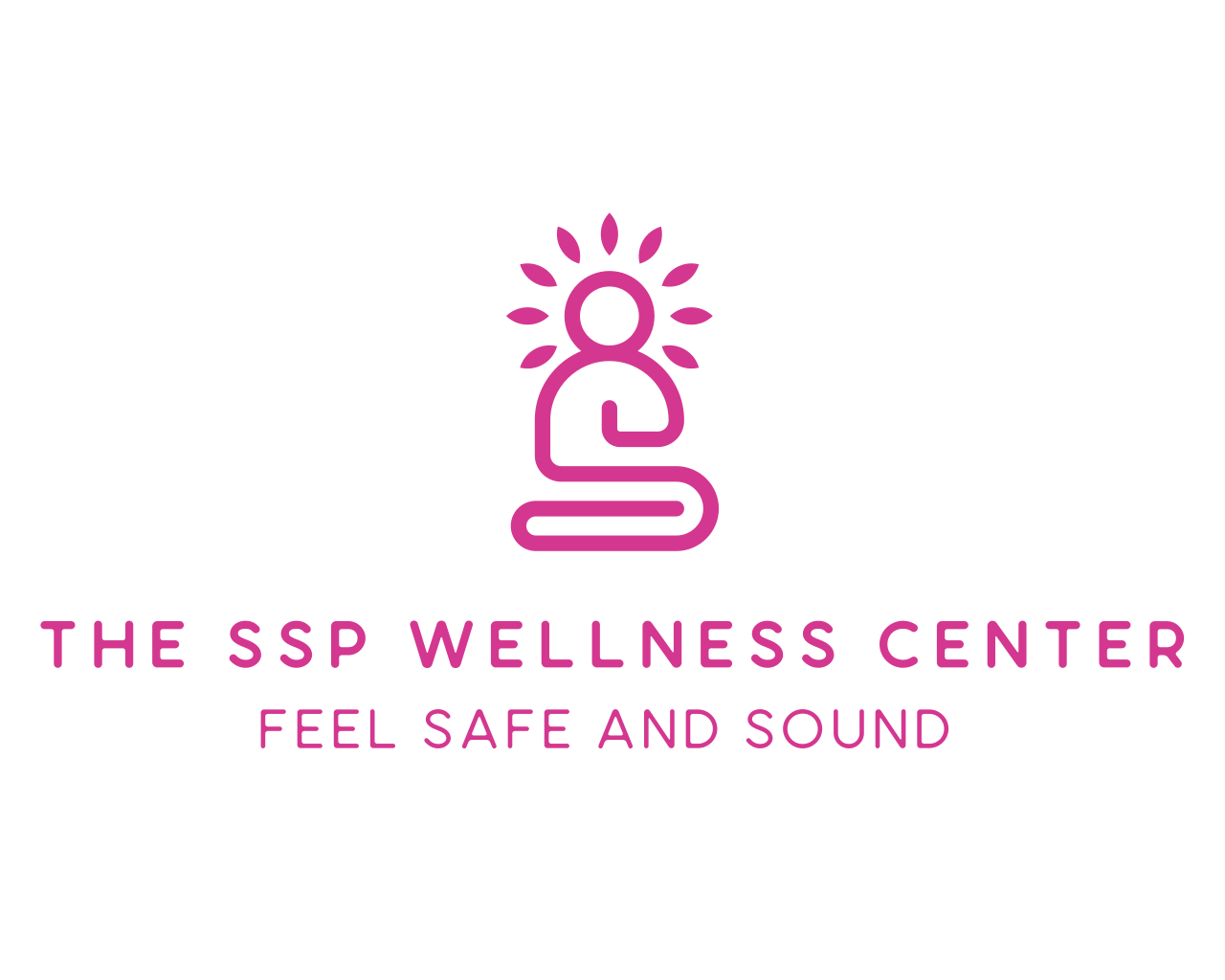If you’ve landed here, you’re probably trying to navigate the various subscriptions and therapist offerings available for the Safe and Sound Protocol (SSP). Maybe you’re confused by the different pacing options suggested by practitioners, and you’re unsure if this is going to take 5 hours or 5 years.
In this article, we’ll walk you through our “Microflow” approach to SSP, how we tailor the experience to your unique needs, and why micro dosing the SSP is key. Spoiler alert: We’ve learned that going slow not only works best but also leads to more lasting benefits.
Oh, and no—it won’t take 5 years. Maybe a few months, perhaps even a year—but you can breathe a sigh of relief there.
How Long is an SSP Listening Session?
The length of an SSP session isn’t one-size-fits-all. It varies from person to person, depending on how your nervous system responds to the filtered music.
Some might tolerate a few minutes, while others may need to start with just a few seconds (yes, seconds!) at a time. The key is recognizing that your body’s response will guide us, and we’ll adjust your pacing based on that.
What is the Unyte Recommended Listening Time?
Once upon a time, Unyte—the creator of SSP—suggested up to an hour per session. But through years of experience, they dialed it back. Today, the recommended listening time is 30 minutes, and that’s a maximum.
Why the shift? They discovered that many people found the longer sessions overwhelming, leading to uncomfortable side effects, and in some cases, further dysregulation.
In the case of SSP, less is definitely more. By reducing the listening time, it’s easier for your nervous system to process and integrate the therapy without you reaching for the panic button.
Introducing Microflow: A Personalized Approach to SSP
Before we dive into SSP pacing, let us introduce you to something we call Microflow. Microflow is the process we use to customize every step of your SSP journey. It takes into account your unique nervous system responses, so we can adjust the speed, pacing, and delivery of your program – so that you get the most benefits from the SSP.
Originally, we designed this approach with clients who have complex conditions and very sensitive nervous systems in mind, but here’s the thing: it’s proving beneficial for everyone.
So what exactly does Microflow involve? In a nutshell, it means we’re pacing and titrating every single aspect of your program. We tune into your unique responses and adjust every little detail as needed—from session length to SSP pathways (Connect, Core, and Balance), and your listening breaks.
Everyone’s program will look a little different with Microflow. For some, it might mean longer sessions spaced out with bigger breaks, while others may benefit from micro listening sessions daily.
How Microdosing Fits Into Microflow
Now, as part of our Microflow approach, we “micro dose” SSP to break down each listening session into tiny, manageable bits. This “less is more” approach allows us to keep things light and gentle for your nervous system, while maximizing benefits and minimizing side effects.
Let’s talk about how we set your pace.
Your Personal SSPace: How We Set Your SSP Pace
When it comes to SSP, pacing is everything. Rushing through the process can lead to further dysregulation, fewer benefits, or no benefits at all. Whereas finding your just-right pace allows your nervous system to experience more significant results and integrate changes much more easily.
So how do we decide your unique SSP listening speed? That’s where your personal “SSPace” comes in. We created this acronym to explain the key factors we consider when pacing your SSP journey. Let’s break it down:
- S = Symptoms
What’s bothering you the most? Whether it’s anxiety, chronic stress, or sensory overload, we need to know what you’re aiming to address with SSP. The better we understand your symptoms, the more we can tailor the pacing to meet your needs. - S = Severity
How much are your symptoms affecting your day-to-day life? Are they a minor annoyance, or do they feel like an uphill battle every day? The severity helps us figure out how slow we need to go to ensure you’re not overwhelmed. - P = Practices
Are you already practicing self-regulation techniques like deep breathing or mindfulness? If so, you’re ahead of the game! These practices support your nervous system through SSP. But if you’re not—don’t worry. We have plenty of resources to get you started. - A = Activation
After your first listening session, how activated do you feel? Do you notice any heightened emotions or physical reactions? We monitor this carefully to help set your pace, so you start at a manageable speed. - C = Co-regulation
Do you have people around you who help you feel safe and supported? Co-regulation is key—whether it’s a friend, partner, or therapist, having a calming presence in your life is crucial during SSP. - E = Environment
Is your current environment stable, or do you have big life changes on the horizon? Moving, job changes, or major stressors can impact how your nervous system responds to SSP, so we factor this in when deciding your pace.

What Does This Look Like in Practice?
Now that you understand how we determine your pacing, let’s break down what that actually looks like for you:
- Getting Started: After subscribing, you’ll complete your intake form and schedule your first call with us.
- Observe & Adjust: During your first call, we’ll have you listen to the first minute of the program, and you’ll share how it makes you feel. Over the following 24 hours, you’ll keep tabs on any symptoms or sensations that arise and keep us updated.
- Personalize: Based on your reaction to that first minute and what we learned in your assessment, we’ll discuss a “Microflow” plan with you. If you experienced a great deal of activation, we might ‘microdose’ your program with very short listening sessions, every few days. If you felt fairly symptom-free, it may mean extending the time a little to test your tolerance for a slightly faster pace.
It’s important to note that you should always stay in touch with us if things start to feel uncomfortable. Your starting pace will not determine the entire program.
For example, if you have to microdose the first hour of SSP, you may see big improvements early on and be able to handle longer sessions in hour two.
On the other hand, you may start with 10 minutes comfortably but find that by hour five, you’re more activated and need to scale back to a few seconds a day.
Why Microdosing Makes SSP So Effective
Rushing SSP can feel like bulldozing your nervous system. We’ve seen clients push through 20-minute sessions and wonder why they didn’t feel any different, why the benefits faded, or—worse—why they ended up more dysregulated.
In contrast, clients who take it slow often report noticeable improvements within the first few days of listening. The gradual build-up allows your system to integrate the benefits gently, leading to longer-lasting change.
That’s why we’re all about microdosing SSP. By breaking the sessions into tiny, manageable chunks (sometimes just seconds at a time), we’ve seen:
- Less Side-Effects: Smaller, manageable doses reduce the risk of overstimulation and emotional discomfort.
- Longer-Lasting Results: Slow pacing allows your nervous system to integrate changes more effectively, meaning benefits that stick around.
- Ideal Activation: You’ll experience just enough activation of your nervous system to gently expand its capacity and make significant progress – without triggering a big stress response.
- Improved Self-Regulation: You’ll have time to build and cement healthy habits of self-regulation that will support you well beyond your program ending.
- Increased Trust: By adjusting the listening sessions throughout your program as and when your nervous system needs change, we ensure your nervous system is heard and supported at all times – as opposed to forcing you through a cookie cutter schedule.
- Better Co-regulation: The gradual pace gives you more time to seek support from others and deepen the healthy, supportive relationships you already have as you go through the program.
- Better Results for Complex Cases: This going slow approach helps your nervous system adapt without being overwhelmed – which is especially important for people with more complex or sensitive systems.
We typically anticipate a minimum of three months to complete one round of SSP. But that’s just a general guide.Our rolling subscription plan supports this slow approach, allowing you to move at your own pace.
Need more than three months for one round? No problem. We’ll help you find your rhythm without the pressure of completing the program on a rigid schedule, or with a practitioner breathing down your neck asking ‘Aren’t you done yet?’ Nobody’s nervous system needs that.

Our Personal Pacing Experience
When we first tried SSP, we were set at five minutes per session—no real discussion about adjusting pacing. Sure, we had some nice improvements, but it also came with side effects, and we needed frequent breaks to manage them.
On my third round, I decided to speed things up—20 minutes at a time. No problem, right? Wrong. It was the only time I didn’t feel any noticeable benefits, and it left me wondering why. Faster should mean better, right?
Trever, on the other hand, hit a wall during his third round. After less than a minute, his symptoms flared up, big time, and his practitioner had no advice for him—no pacing adjustments, no microdosing suggestions. He was just told to stop. Not exactly good practice.
By our fourth attempt, we knew better. I found my sweet spot at 30 seconds every other day, putting me into parasympathetic states I hadn’t felt in 15 years. Trever reduced his listening time to 10 seconds every two days and immediately noticed shifts in energy, mood, and digestion.
That’s when we both started seeing the biggest improvements, without the uncomfortable side effects. We’d finally learned the power of microdosing.
What If I Want to Go Faster?
We get it—going slow can feel frustrating, especially when you’re eager to feel better. But based on our expertise and experience, microdosing tends to yield the best results. If you’re curious about faster options, check out our article on “What if I Want to Go Faster?” It dives deeper into whether other routes might work for you and how we can help you make the best decision for your nervous system.
One-Hour SSP Sessions: Should You Avoid Them?
You might come across practitioners who still offer one-hour SSP sessions, but we recommend steering clear. Unyte has updated its guidance for a reason—longer sessions can overwhelm your system and slow your progress. If a practitioner suggests you go for an hour at a time, consider this your friendly reminder to run for the hills. Slow and steady really does win the race when it comes to SSP.
Going Slow is the Key to SSP Success
In our experience, taking a slow, microdosing approach to SSP creates the best environment for lasting, meaningful change. Whether you’re tackling chronic pain, trauma, nervous system dysregulation, or neurodivergence, going slow helps you to go fast—meaning you see improvements earlier and hold onto them longer. Trust us, we’ve been there, and we’ve seen how microdosing makes all the difference.
If you’re ready to start your journey, let us help you find your personal SSPace, and let’s pace it right from the start.

